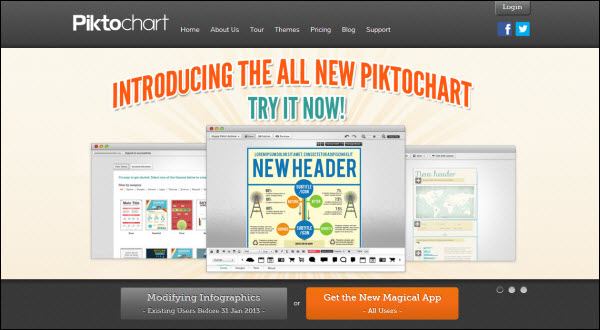Improve Your Social Networks for SEO with These Tips
 The days of relying on just websites to build a strong search engine strategy are now long gone. Today it’s all about who shares your URL and drives visitors to your site through the various social networks.
The days of relying on just websites to build a strong search engine strategy are now long gone. Today it’s all about who shares your URL and drives visitors to your site through the various social networks.
For the last few years, Google’s focus has been to eliminate spam websites and to crawl content that is original and conversational. Readers and social media followers are increasingly turning away from direct advertising and affiliate links and demand a more human approach.
A website that ranks well passes all of Google’s latest requirements through the following factors:
- Offers a high value to its audience
- Entertains and informs
- Produces regular, fresh content
- Includes interactive elements and videos
- Includes links to the major social networks
- Has a minimum of advertising above the fold
- Is mobile-friendly and easy to read and share
These elements not only please Google, but also attract those all-important social media shares. Here’s how to put this into action:
1 – Install social icons strategically
Just about everyone knows it’s important to install social buttons, driving people to “Like”, share your posts or “Follow” you on social media. But not everyone makes the most of this SEO boosting strategy. Thousands of website owners install plugins such as Sumo into their WordPress websites, but these need to be customized for the following reasons:
- They might disappear below the fold
- Are not prominent enough or are missed by more eye-catching content
- Are in a place the eye skips over
- The icons are too small
It’s important to make sure your social share buttons, badges and icons appear in the best location. They should be so attractive that people can barely resist the impulse to click on them.
Proven tips that work:
- Place them in sidebar widgets (making sure they appear above the fold, preferably in the right-hand upper side of the page)
- Place them under web contact forms or contest announcements
- Choose plugins that allow you to put them under or on top of each post
- Study top websites and decide which placements are the most effective
Once you’ve done the latter, decide which types of placement would work best for your particular website layout – and purpose.

Only include the most relevant social networks to your target audience, like this example from my client, Beverley Glazer of Reinvent Impossible.
Your readers will be more apt to share website content if you make it one-click easy for them.
2 – Create a mix of your content media
An attractive website includes both text based content and interactive or video content including infographics.
This allows you to use your website to inspire and drive visitors to your:
- Facebook Page
- Pinterest boards
- YouTube channel
- SlideShare presentations
- Facebook Live videos
- Twitter chats
- Instagram campaigns
The more organic traffic that flows between your social sites and websites, the higher your Google search rank and the more visibility Facebook and other social networks will grant you.
3 – Maintain regular, natural social site activity
Interact on your social media daily and regularly. Don’t bombard your fans and followers with a large string of tweets and posts – but do be consistent, especially in responding and posting. People should never see “3 months ago” on your last feed.
The main goal should first be in building authentic relationships, which in turn drives more traffic to your website. Remember that less visitors means less shares from your site.
4 – Facebook sponsored posts
Now that organic reach has greatly diminished on Facebook brands now need to turn to the Sponsored Posts feature in order to grow their Fan pages, which can still be linked to your website.
You can create these out of any of your top performing posts such as photos, videos, a recent article, ect.
Here’s a rundown on exactly how this works from Facebook:

You can even promote your event through a Page Post ad – and you can have these shown to anyone on Facebook, even when the people seeing it are not connected to you through Facebook friends, Groups or Pages.
5 – Maximize your Pinterest potential
One of the best ways to ensure your website content gets shared is through pinning your posts on Pinterest. Not only does this mean adding the “Pin it” button to your images, but making it easy for them to find your profile and boards on your landing page.
Make sure your images are well optimized and sized correctly though tools like Canva or PicMonkey. These will allow you to create your own “pinnable” graphics that stand out to your followers.
Infographics are also popular on this platform — you can easily create these yourself using templates from apps such as Visual.ly or Piktochart. Or you can simply hire someone to create your infographic for you.

When you post your infographic on your website you can increase your website traffic and shares not only on Pinterest, but also on places like Tumblr, Facebook, and Google Plus.
6 – Make use of SlideShare
If your demographic is younger than 35, you should especially use SlideShare, which is in the ballpark with the top sites previously mentioned on Alexa graph comparisons, currently ranking 143 globally – a top rating.
Write a post on your topic featuring the link to a SlideShare presentation summarizing or clarifying that topic.
Just make sure you optimize your slides with large print and a minimum of distraction, since SlideShare also comes in a mobile version.
7 – Provide What They Need
Ensure your content provides a useful balance. This means including different types of content:
- Evergreen content – Posts that are always “in season” and relevant
- Up to the minute “hot” content – breaking news, new methods, changes (especially to social media, if that’s relevant to your niche)
- Resources visitors will return to access – infographics, lessons, diagrams, charts, templates, apps (e.g. calorie calculators) and checklists
- Sign-up incentives – Reports, templates, checklists, tip sheets
By optimizing your website content and making it more shareable on social media your business can improve your search engine rankings as well as visibility in the major networks. The new SEO process is now tied to this marketing method, especially as content becomes more visual and interactive.


0 Comments